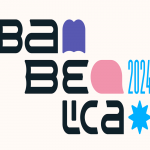Ebook Licensing Guide for Public Libraries and Publishers
 The 21st century will witness Public Libraries becoming one of the main sites on the Internet for readers to discover new reading material (ebooks, audio books, apps, etc.), in conjunction with other readers of similar tastes. Such prospects will provide publishers with a wide range of possibilities to use new business models whereby libraries will be able to offer elending services in keeping with the new trends in content consumption (book club streaming services, pay-as-you-read, etc.)
The 21st century will witness Public Libraries becoming one of the main sites on the Internet for readers to discover new reading material (ebooks, audio books, apps, etc.), in conjunction with other readers of similar tastes. Such prospects will provide publishers with a wide range of possibilities to use new business models whereby libraries will be able to offer elending services in keeping with the new trends in content consumption (book club streaming services, pay-as-you-read, etc.)
The main purpose of the attached «Ebook Licensing Guide for Public Libraries and Publishers«, resulting from the collaboration between Publishing Perspectives, the leading international book publishing news and opinion magazine; Bookwire, a platform specialising in the worldwide distribution of more than 100.000 eBooks and audiobooks of more than 1.000 publishers from around the world, and Dosdoce.com, a company specialising in the development of digital business models, is to provide professionals in the book world with a broader insight into the numerous opportunities offered by new ebook licensing models and to dissipate any doubts or preconceived ideas in relation to those models.
The Guide describes in detail 8 types of licenses most used by public libraries across the world:
- Non-concurrent user license
2. Concurrent user license
3. Limited loan licenses
4. Limited term licenses
5. Unlimited term licenses
6. Perpetual license
7. Subscription license
8. Pay-per-use license
What aspects contribute to a elending license?
Generally speaking, there are three key aspects which define a digital license: the concurrence of users, the number of times a given eBook may be loaned out and the duration of the license.
1) Reader concurrence
The concurrence of users refers to the number of readers who may read the same document simultaneously, something that does not happen with printed books but is possible within the digital framework. The library will therefore have to decide whether each eBook will come under a non-concurrent single user license (the only one possible with print books), allowing access to one user only, i.e. as occurs with printed books, or whether it will allow multiple users access to the same eBook simultaneously.
2) The number of times a given eBook may be on loan
Circulation, preferably known as the number of times the same eBook may be loaned out during the duration of a license, is another key aspect to be taken into consideration by librarians and publishers. On a worldwide basis, most licenses envisage a circulation ranging from 20 to 26 loans.
3) Duration of a license
Lastly, the length of time during which the library may use the license is usually defined by a specific term, which usually lasts various months or up to a couple of years or licenses with unlimited time licensing models such as perpetual access or until the last loan has been consumed.
Establishing the most suitable licensing choice
Libraries are precisely known to cater for an extensive range of users with different tastes in reading and varied interests. Indeed, we could not imagine a publisher or library using one sole licensing model or having all its contents under one, single lending model as far as concurrence, circulation and term. On the contrary, the flexibility of the digital context allows for different licensing models based on the kinds of documents or even users.
We hope that greater knowledge and understanding of the peculiarities of the licenses referred to in this guide will enable both libraries and publishers to select the most suitable elending model based on their needs. This process should be looked on as a negotiation among peers. In the digital age, publishers and libraries are “doomed” to getting along, in the good sense of the word, since they both need each other more than ever.
To download the “Guide to eBook Licenses Purchase Models for Libraries and Publishers” report in PDF, please click here.





